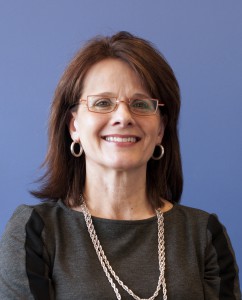 Margaret Coughlin is a Senior Vice President and the Chief Marketing and Communications Officer at Children’s Hospital Boston
Margaret Coughlin is a Senior Vice President and the Chief Marketing and Communications Officer at Children’s Hospital Boston
Disruption. A core ideal of the TEDMED conference. I’m in a senior strategic marketing position at Children’s Hospital Boston, in a healthcare world in dire need of solutions. What can I do as an individual to spark disruption, change the course?
Brilliant individuals from all over the world have converged here. From biology lab leaders to the U.S. Surgeon General (yes, she is here) – they’ve all convened to share, to educate and to think. The ideas are flying, and the different disciplines are connecting dots that at first glance make no sense. Worlds are colliding and combining and then dividing again. Art, sensing technology, mobile devices, biology and on and on are merging to create solutions to an uncountable number of healthcare problems.
The fundamental question, though, is why doesn’t this happen every day, and happen faster? Is it inertia? Is the competitive spirit keeping our ideas locked in separate domains? Is it systems getting in the way? Perhaps it is none of this, but only a failure of human will to overcome the obstacles and conventions and effect change.
The private sector, the research sector and the medical sector are all focused on speeding up the number and types of healthcare solutions, changing the trajectory of science to affect our lives. Many at TEDMED are calling for the FDA and others to get out of the way and to encourage disruptive behaviors.
Right or wrong? It doesn’t matter. What matters is human will, and the ability to execute it and make things happen. That’s the critical factor, the driver and the common bond among us here.
Stories
We all love stories. They motivate us, they strike chords in both our rational and emotional being. They move us to action.
We have seen devices, procedures and processes at TEDMED that are leaps ahead in medicine. Each is more amazing than the last—scarless fetal surgery, implants that cure blindness, robotic arms that can pick up grapes. But what do people talk about over coffee or cocktails?
They talk about the stories. The child with diabetes, the parent with Alzheimer’s, the soldier without an arm, the cancer diagnosis that only four people in the U.S. have had in the last 10 years—the personal stories that drive individuals to seek solutions, form teams and set goals to do things that have never been done. This reassures everyone.
Tapping passion
Have you ever met or heard Dean Kamen speak? He is the guru of robotics in the U.S. He loves robots and all things robotics. Perhaps not that unusual at TEDMED, but what is unusual (and humbling) is that he’s taken that passion in many directions.
The one that stands out is using robotics to motivate our young students. Kamen and his team have constructed a competition that’s changing the lives of teenagers across the country. The students compete to create devices and solutions that shame many a senior engineer.
How did Kamen’s team do it? They studied what kids care about. Kids love celebrities and all they represent. Sports stars, movies stars, music stars—the “heroes” of a generation. Huge influencers for their actions and dreams.
Having studied what will turns kids on, Dean and his gang nailed it by the way they structured usfirst.org. A practical solution that actually engages the upcoming generation of scientists and mathematicians. Experiential learning combined with competition. The way humans learn best.
As for Dean and his team at DEKA, check out their solution to bring clean drinking water to the developing world. In use right now in Africa, and CocaCola likely scaling it for the developing world, this system might motivate a few teenagers.
The human factor is the deciding factor, and the possibilities are endless. It’s a great reminder as I work with the leadership at Children’s Hospital Boston to create scalable healthcare solutions that our patients and families need and want.







